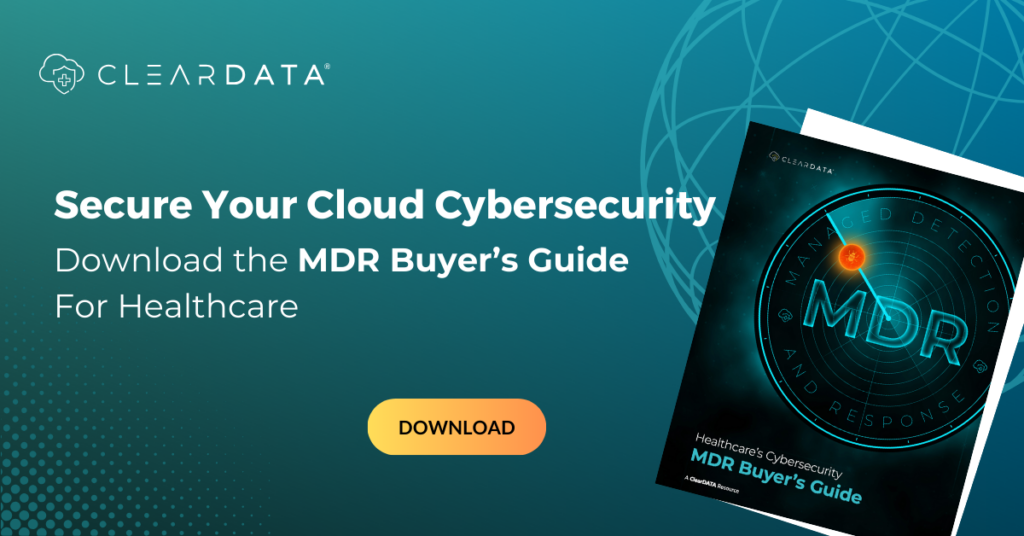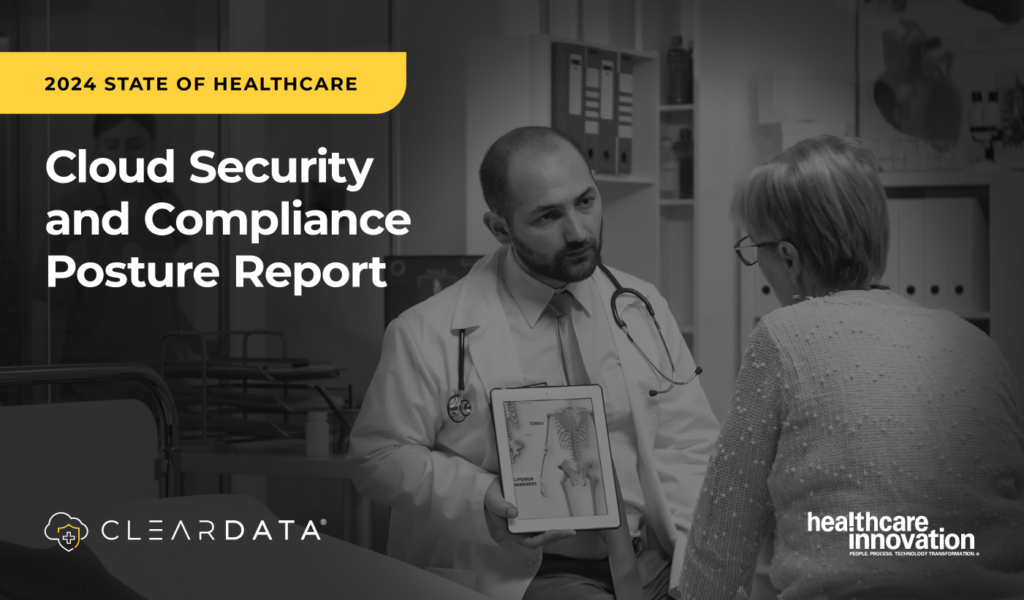What Is Managed Detection and Response (MDR) for Healthcare?

The healthcare industry faces relentless cyber threats, making robust, proactive defenses essential. Managed Detection and Response (MDR) in healthcare provides organizations with a dynamic, comprehensive cybersecurity solution that not only detects threats, but responds to them in real time.
MDR services provide tailored, 24/7 threat management for healthcare providers by blending cutting-edge technologies—such as Security Information and Event Management (SIEM), Endpoint Detection and Response (EDR), and Threat Intelligence Platforms (TIP)—with expert human oversight. This powerful combination ensures comprehensive and proactive protection against evolving threats.
Let’s be honest—healthcare simply cannot afford to fail.
Understanding Managed Detection and Response for Healthcare
MDR is a cybersecurity service designed to protect an organization’s IT environment through constant monitoring, rapid detection, and immediate response to cyber threats. Unlike traditional preventive security measures, MDR focuses on identifying and mitigating active threats before they cause potential damage to an organization’s infrastructure.
For healthcare organizations, where protected health information (PHI) is a prime target for attackers, MDR services are not just a luxury, but an operational necessity. Stolen medical records can sell for as much as $1,000 per record on the black market, and yet, only a small percentage of healthcare institutions have achieved mature cybersecurity compliance.
Healthcare providers face persistent cyber threats targeting their digital systems. Managed Detection and Response (MDR) combines advanced security technology with expert human intervention to prevent attacks. MDR provides 24/7 protection, even when internal teams lack resources or expertise to respond quickly. So why is the healthcare industry still behind in adopting strong cybersecurity measures, despite being such a critical sector?
Benefits of MDR for Healthcare Organizations
Healthcare organizations gain measurable advantages when adopting MDR services over ad hoc cybersecurity measures. Here are key benefits offered by Managed Detection and Response for Healthcare:
- Cost Efficiency: Building an in-house security operations center (SOC) can be prohibitively expensive. MDR services offer a more budget-friendly alternative, with access to 24/7 monitoring and expert resources at a fraction of the cost.
- Improved Focus on Patient Care: Outsourcing cybersecurity to an MDR provider helps healthcare teams prioritize patient care without distraction from managing alerts or investigating security incidents.
- Reduced Alert Fatigue: MDR services streamline alert management by filtering false positives and directing attention to critical threats, improving incident response efficiency.
- Proactive Threat Mitigation: Services like threat hunting and vulnerability analysis ensure security measures stay ahead of attacker strategies.
- Regulatory Compliance: Healthcare organizations face stringent regulations, such as HIPAA and HITRUST. MDR providers ensure that security protocols align with compliance requirements, minimizing liability risks.
MDR, EDR, MSSPs, and MSPs
While overlapping in functionality, MDR differs significantly from solutions like Endpoint Detection and Response, Managed Security Service Providers (MSSPs), and Managed Service Providers (MSPs):
MDR vs. EDR
- EDR focuses solely on endpoint security.
- MDR addresses endpoint, network, and cloud security, offering a more holistic approach.
MSSPs vs. MDR
- MSSPs monitor and manage security tools, but rely on the client for threat response.
- MDR provides an active response, including containment and remediation.
MDR vs. MSPs
- MSPs focus on general IT management.
- MDR delivers specialized threat detection and incident response solutions.
Selecting the Right Managed Detection and Response Provider for Healthcare
Choosing the right MDR provider for healthcare is critical to ensuring effective protection. Here are essential criteria to evaluate:
MDR Providers with Industry-Specific Expertise
Healthcare operates in a high-risk, highly regulated environment. Look for MDR providers with proven experience in healthcare cybersecurity and compliance, including expertise in securing PHI and adhering to HIPAA requirements. Certifications such as CISSP and CISM among the provider’s personnel signify advanced proficiency in managing complex threats.
24/7 Threat Detection and Proactive Hunting
MDR services should deliver around-the-clock threat monitoring and proactively hunt for vulnerabilities, rather than waiting for an alert to act. This ensures rapid responsiveness and continuous improvement in the organization’s security posture.
Compatibility and Scalability
It’s important to select an MDR provider who is capable of integrating seamlessly with your existing infrastructure, while offering scalable services to support organizational growth.
MDR Platforms with Clear Communication and Reporting Capabilities
Effective communication sets great MDR providers apart. Look for those offering regular security reports, real-time updates during incidents, and dedicated account managers for ongoing support.
Endpoint Detection and Response (EDR)
EDR tools focus on monitoring endpoint devices, such as workstations, servers, and other critical systems, for malicious behavior. These solutions provide real-time visibility into endpoint activity, allowing threats to be contained and addressed before they proliferate across the network.
Given that healthcare professionals often rely on diverse devices, from tablets in clinical settings to remote-access systems, EDR serves as the frontline defense for endpoint security.
Threat Intelligence Platforms (TIP)
A Threat Intelligence Platform collects data on emerging cyber threats from global sources and analyzes it for relevance to the healthcare environment. By proactively identifying new attack vectors, TIPs empower MDR services to anticipate and neutralize risks before they escalate.
Automated Threat Detection and Machine Learning
Many MDR providers employ machine learning algorithms to identify anomalies that might elude traditional detection mechanisms. These advanced systems adapt to new data, recognizing zero-day vulnerabilities and sophisticated attacks. This technological edge makes MDR indispensable for defending against evolving threats.
Enhancing Cybersecurity with Managed Detection and Response for Healthcare
Cybersecurity is a critical issue for healthcare, where data breaches can have serious consequences. Managed Detection and Response (MDR) services provide scalable, adaptive defenses by combining advanced tools like SIEM and EDR with expert support. This allows healthcare providers to focus on patient care while ensuring data security.
Meet A Cloud Security Expert
FAQ
How does Managed Detection and Response work in healthcare?
Managed Detection and Response (MDR) in healthcare combines continuous monitoring tools like SIEM and EDR with expert human analysis. These systems detect suspicious behaviors, validate incidents, and respond to threats in real time. MDR services ensure proactive threat hunting, rapid containment, and root cause remediation, helping protect sensitive healthcare data and maintain compliance with regulations like HIPAA.
What are the cost benefits of MDR compared to building an in-house security team?
Establishing an in-house cybersecurity team or Security Operations Center (SOC) involves high costs for recruitment, training, and infrastructure. MDR offers a cost-effective alternative by providing access to advanced technologies, expert personnel, and continuous monitoring without the long-term expenses of maintaining an on-site team.
What role does automation play in MDR for healthcare?
Automation, including machine learning, is a key feature of MDR. It enables rapid detection of anomalies, zero-day threats, and advanced attacks that traditional systems may miss. This continuous learning process ensures that MDR solutions stay effective in defending against sophisticated cyber threats in healthcare environments.
Discover what a compliance forward approach looks like in healthcare.


